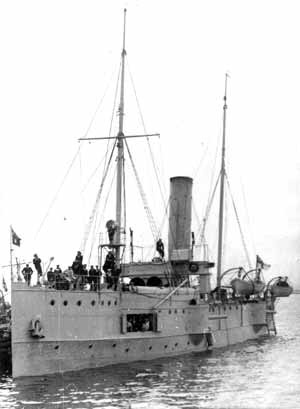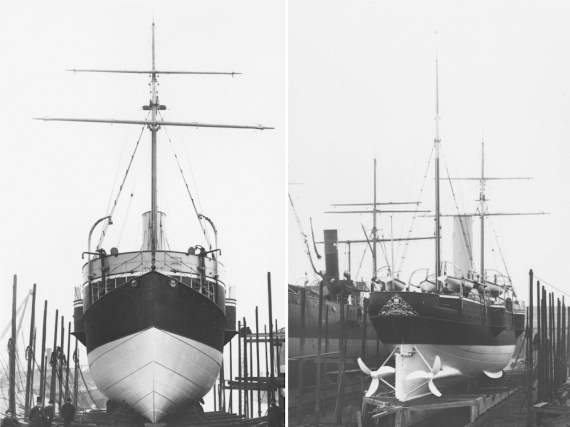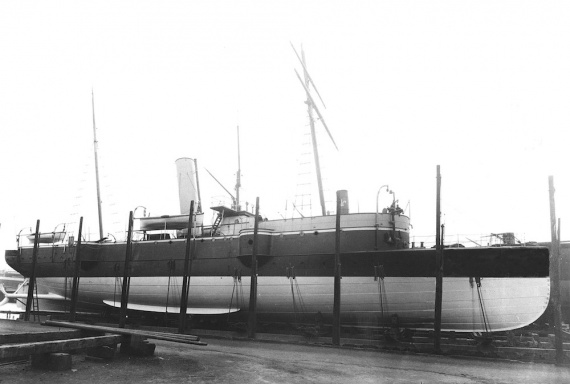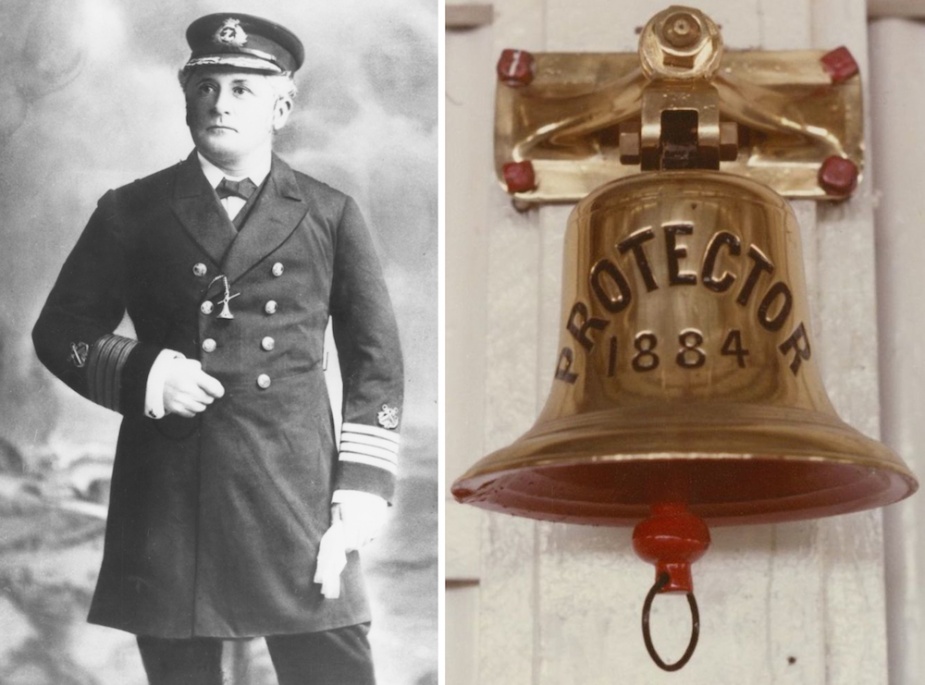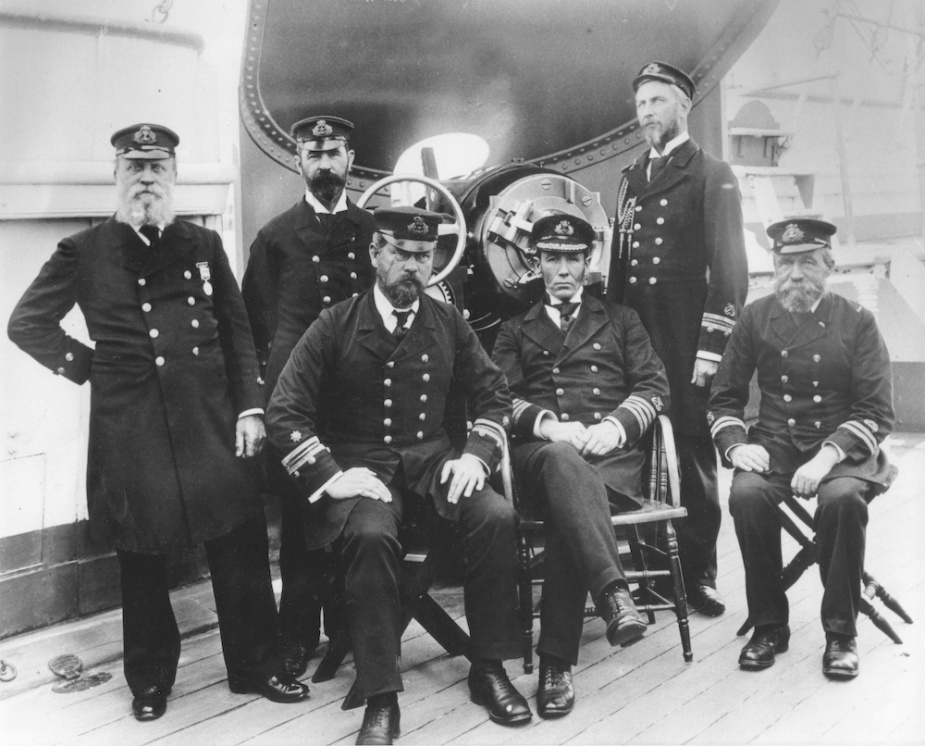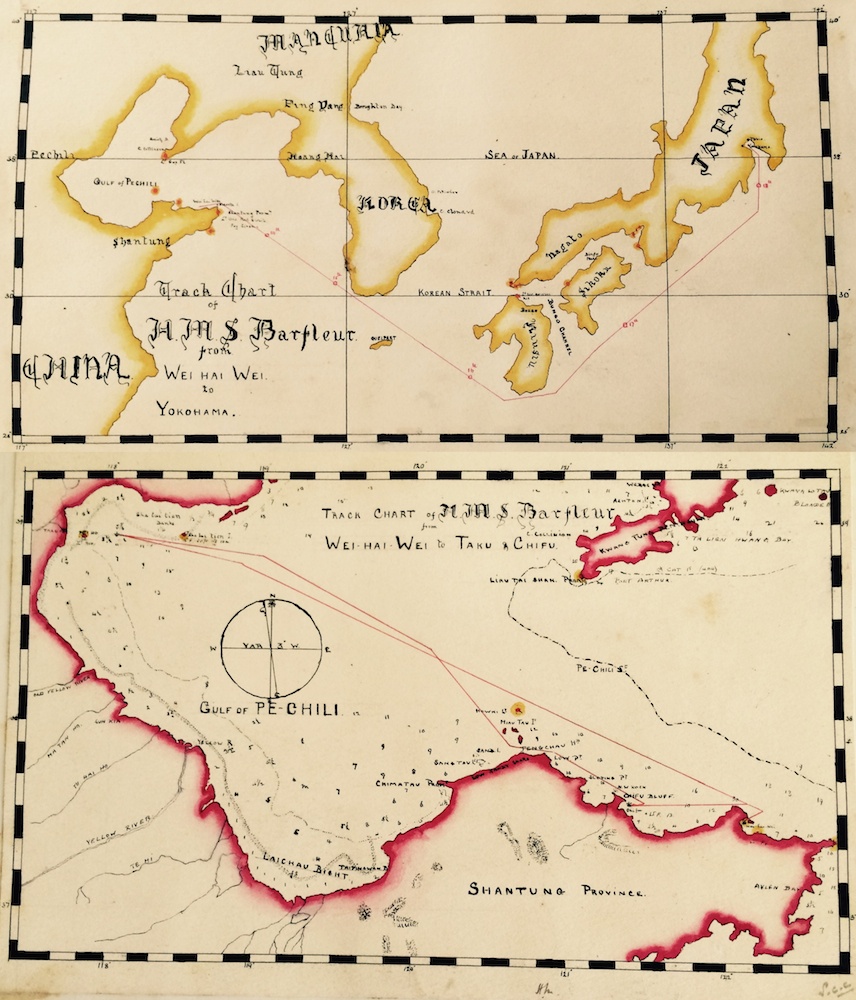HMAS Protector (I) (HMCS)
| Type |
Gun boat |
|---|---|
| Builder |
William Armstrong & Co, Newcastle-on-Tyne, England |
| Commissioned |
19 June 1884 |
| Decommissioned |
June 1924 |
| Dimensions & Displacement | |
| Displacement | 920 tons |
| Length | 180 feet 6 inches |
| Beam | 30 feet |
| Draught | 12 feet 6 inches |
| Performance | |
| Speed | 14 knots |
| Complement | |
| Crew | 90 |
| Propulsion | |
| Machinery | 2 compound surface condensing engines |
| Horsepower | 1500 |
| Armament | |
| Guns |
|
| Other Armament |
|
| Awards | |
| Battle Honours | |
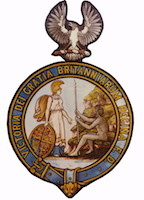
The gunboat Protector was ordered in 1883 and built at a cost of £65,000 for the South Australian Government following a decision to establish a naval force for the protection of the colony’s coasts and harbours. For her size she was an exceptionally heavily armed vessel, boasting a main armament of 1 x 8-inch and 5 x 6-inch breech loading guns.
To conserve coal, Protector was originally rigged as a topsail schooner, carrying two yards with sail, on her foremast. Her official emblem was that of the 1837 Great Seal of South Australia, depicting Britannia arriving from over the ocean and extending the hand of friendship to an Aboriginal seated on the shore.
Protector was launched in 1884 at the Elswick yard of Armstrong, Mitchell & Co Ltd, of Newcastle upon Tyne, England. She commissioned on 19 June 1884 under the command of Commander John CP Walcott, RN before undertaking passage to Australia via the Suez Canal. She arrived at Port Adelaide, flying the Blue Ensign, on 30 September 1884. At the time of her arrival the South Australian newspaper, The Register, reported:
The Protector has a naval look about her, but tapers away rather duck fashion astern, and has a somewhat singular appearance with her immensely long broadside guns projecting many feet beyond the ports. They are so long that if they were run in (which they are not arranged to do) they would extend nearly, if not all, the width of the deck.
Protector was soon embraced by South Australians and over the next fifteen years she became a familiar sight in coastal waters undertaking training cruises and port visits.
In 1900 Protector was offered to, and accepted by, the Imperial Government for service in China as part of the Colonial Naval Forces raised to rescue foreign legations in Peking from anti-Western and virulently anti-Christian Boxer Rebels. For legal reasons the vessel was temporarily commissioned in the Royal Navy, clearing the way for her to operate outside of South Australian waters. Appointed in command was Captain William Rooke Creswell, CMG, an experienced officer who had previously served in the South Australian Naval Forces and who was at that time the commandant of the Queensland Marine Defence Force.
Protector sailed from Adelaide for Sydney on 6 August 1900 proudly flying the Royal Navy White Ensign from her stern. She arrived in Sydney on 10 August where she took on coal, additional small arms and provisions before departing for Brisbane on Sunday 12 August. Captain Creswell assumed command of Protector on 14 August 1900 when the ship called at Brisbane during her northerly passage. Creswell later recalled:
I was glad indeed to see the sturdy little ship steam into a berth in the Brisbane River. It was indeed a stroke of luck that brought me back into my old force, every soul of whom I knew so well
Protector's next stop was Townsville where she arrived on 18 August. There Gunner William Blake joined the ship’s company as a special service officer and interpreter in Chinese. He observed:
My first glance at the ship’s company convinced me that they were a hardy lot of men, fit to go anywhere. Events proved I was right. I could see it was no pleasure cruise for these men. From the day I set foot on board until we returned, both officers and men were kept incessantly at drill, either at the guns, small arms, general quarters, man and arm boats, collision and fire drill. Going to quarters was no make believe, as every time we went to quarters, the ship was prepared for battle, and all the top hamper taken down. Everything in the ship that could give any protection to the quick-firing gun’s crews, such as awnings, sails and hammocks, was used. [i]
After transiting the Great Barrier Reef Protector called at Thursday Island on 22 August where she replenished with water before continuing her voyage to China via Manila and Hong Kong. Protector reached Hong Kong on 9 September 1900 and proceeded for Shanghai a week later. In Chinese waters, the expected use of shallow draught vessels of Protectors type was not called for but she nevertheless performed useful work as a survey vessel and in carrying despatches in the Gulf of Pechili.
Protector's return to Australia began when she sailed from Wei-Hai-wei in northern China for Hong Kong on 7 November 1900 arriving there six days later. She sailed from Hong Kong on 24 November taking passage via Manila, Amboina, Thursday Island, Cairns and Brisbane where Captain Creswell relinquished command to Commander CJ Clare. The ship then steamed to Sydney in time to take part in the ceremonies inaugurating the Australian Commonwealth on 1 January 1901. She received a warm welcome when she arrived back in Port Adelaide on 6 January 1901. There Commander Clare was interviewed by the press in conection with Protector's service in China observing that:
It is interesting to know that ours was the most healthy ship in the station. While nearly every other man-of-war had from 15-20 percent sick, our sick list was practically nil, with the exception of a few cases of influenza. With regards to the ship she was certainly the most heavily armed vessel for her size on the China station. Both Admiral Seymour and Admiral Pearson who inspected us in Sydney, said she was an efficient ship.
On 1 March 1901 Protector, and all other naval forces of the various Australian states, was transferred to the Commonwealth. As a Commonwealth naval vessel Protector was used to train the Naval Militia Forces of New South Wales, Victoria and South Australia.
Her role as a training ship continued following the foundation of the Royal Australian Navy in 1911 when she commissioned as HMAS Protector. In 1912 Protector underwent a number of alterations and additons that saw the removal of her 8-inch gun and the bow section built up and raised to main deck level. During the period 1912 to 1913 she was constantly on seagoing service on the Australian coast.
In September 1913 Protector became a tender to the colonial turret ship HMAS Cerberus berthed at Williamstown, Victoria and was serving in that capacity at the outbreak of World War I, when she was sent to Sydney to act as parent ship to the two new Australian submarines AE1 and AE2. On 28 August 1914 she sailed from Sydney as escort to the submarines and as a unit of the Australian Naval and Military Expeditionary Force assembled to capture the German New Guinea colonies. Following the surrender of these colonies on 17 September 1914, Protector remained at Rabaul as one of the guard ships until 4 October 1914 when she sailed for Sydney in company with HMAS Fantome.
Protector remained in Australian waters, mainly at Melbourne, for the first eight months of 1915, but in October 1915 she was sent off to the Cocos Islands in the Indian Ocean to report on the wreck of the German cruiser Emden which had been driven ashore on North Keeling Island by HMAS Sydney on 9 November 1914. She returned to Australia in December 1915 and for the remainder of the war was employed as a tender to HMAS Cerberus with various periods of seagoing duty as a coastal patrol vessel between Sydney and Cape Howe, and as a minesweeper in Victorian waters.
In the post war period she continued to serve as a tender to Cerberus at Williamstown. In May 1920 she carried an advance party to Flinders Naval Depot on Westernport Bay in preparation for the official opening which took place on 1 September 1920. On 1 April 1921 she lost her thirty seven year old identity as Protector when she was renamed HMAS Cerberus and became the tender to Flinders Naval Depot at Westernport.
In June 1924 she paid off for disposal and was sold to Mr J Hill of Melbourne for £677.10.0d. She was resold in 1931 to the Victorian Lighterage Co who renamed her Sidney and who used her as a wool lighter for many years.
In July 1943 she was requisitioned for war service with the United States Army Forces in Australia (USAFIA). She was subsequently damaged in a collision with a tug off Gladstone, while under tow en route to New Guinea, and abandoned. What remains of the old gunboat is now serving a useful purpose as a breakwater on Heron Reef, Queensland.
[i] 'No Pleasure Cruise', Tom Frame, Allen & Unwin, Crows Nest, NSW, 2004.
Further reading
- 'A Warship for South Australia' by Robin Pennock - published by Robin Pennock © SA, 2001.
- 'Australia's Colonial Navies' by Ross Gillett, Naval Historical Society of Australia, NSW, 1982.

